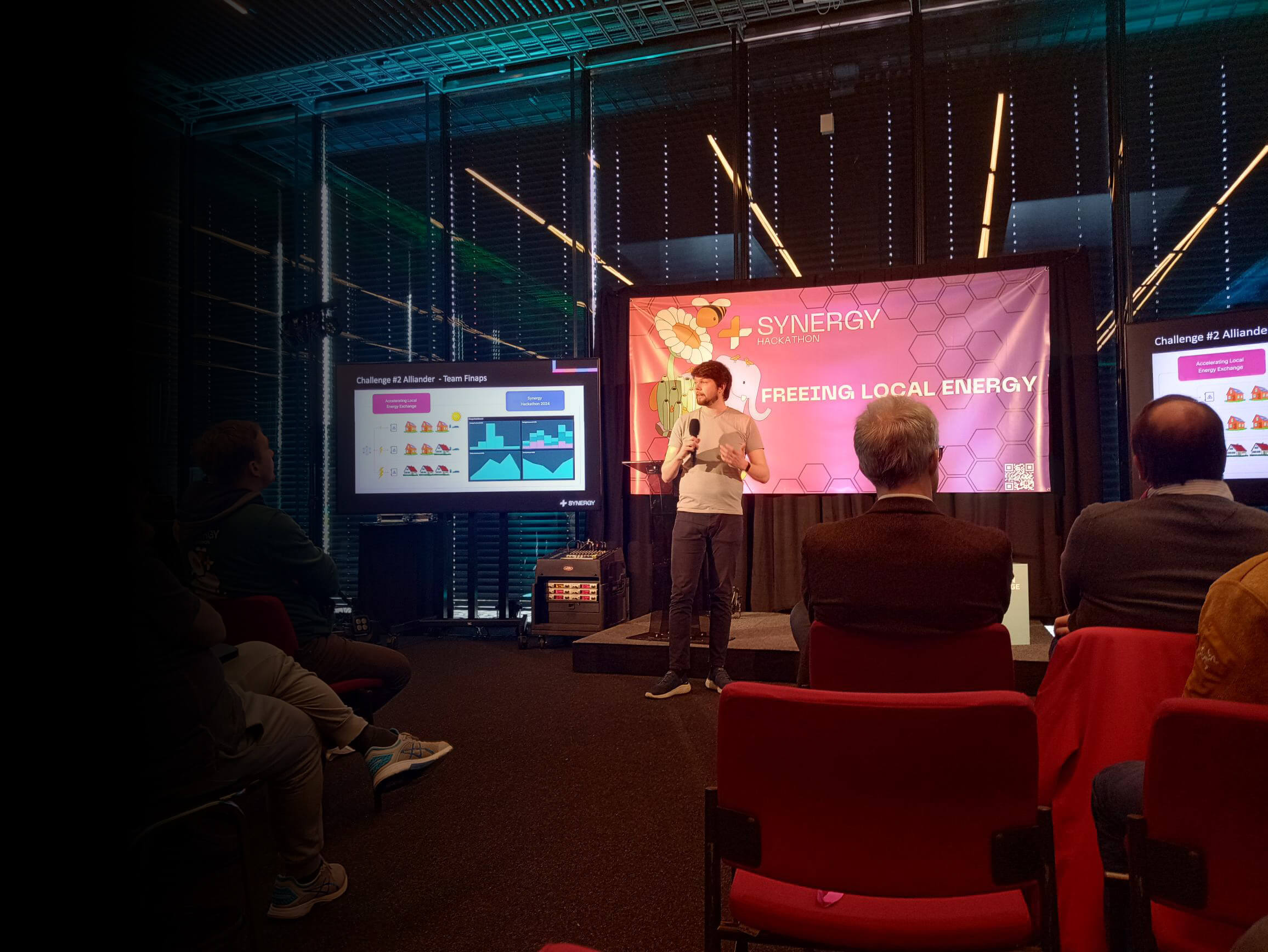
SYNERGY HACKATHON 2024
Accelerating the local energy exchange with Alliander
We found ourselves at the Delft University of Technology to participate in the Synergy Hackathon, read on to see the solutions we came up with!

The challenge
The primary challenge we faced was finding a solution to promote and streamline local energy exchange. This entails encouraging energy users to utilise locally produced renewable electricity as it becomes accessible. Alliander, as the grid operator, was keen on facilitating this shift because the current system often leads to grid congestion and avoidable losses from transmitting power over long distances. Thus, reducing the distance electricity travels benefits not only users but also the grid

Our solution
Our solution focused on filling the information gap that we perceive to exist within local communities. At the moment, there is no way for an energy consumer to knowingly make use of surplus power that is produced locally. For example a household with solar panels may be producing an excess of electricity on a sunny day, that power enters the grid and is then sent to the nearest consumer looking for power at that moment. If someone wished to perform an energy intensive task (such as charging an EV, doing laundry or running an oven) and lower their environmental impact (by preventing loss to transmission and overburdening power stations), from the grid’s perspective, the optimum time is when there is an excess from their neighbour is being produced.

We proposed to build a platform that allowed consumers to opt in to provide data of their energy use, in conjunction with data from the local substation (the centralised point that lowers high voltage electricity to a lower household level voltage), and in turn they’d would receive advice and suggestions for optimal times for energy intensive tasks based on their local power system. The idea was that by influencing when heavy energy use was performed, it would ensure the grid remained more balanced throughout the day. Financial incentives to using electricity at recommended times could be arranged through the power companies and grid operators, who already budget for power loss through transmission. Through such a platform one could also mark themselves as absent (should they not required power at a given time), informing the grid operator of an expected drop off in demand / corresponding increase in capacity.
Going forward
Looking ahead, integrating such a platform with smart home devices can automate various tasks seamlessly. While we aimed to discuss pricing, Alliander, not being an energy supplier but solely responsible for infrastructure, preferred limited involvement in this aspect. Currently, energy pricing operates at a national level, but our platform has the potential to enable dynamic pricing locally, considering factors like solar panel usage.
For instance, if your neighbor with solar panels isn’t using electricity while it’s sunny, and you are, some of your power may come from them. In this scenario, they should be rewarded with a better rate for supplying nearby users, while you could enjoy a discounted price for utilizing locally generated power. Through calculated adjustments, it effectively simulates users paying their producer neighbors for their power.


